#Savoyards and Italians
Text
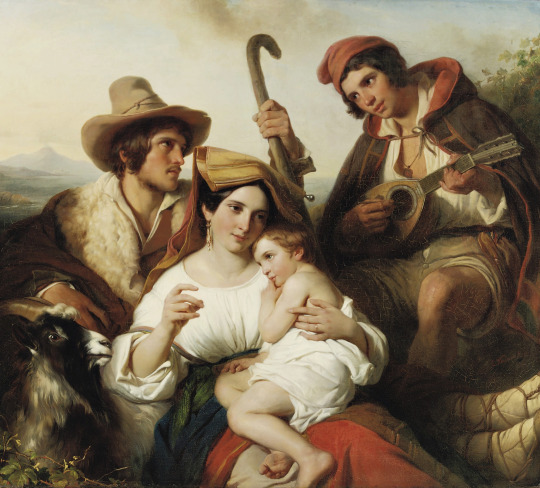
Cornelis Kruseman (Dutch, 1797-1857)
Savoyards and Italians, 1840
#Cornelis Kruseman#Dutch#Dutch art#1800s#1700s#Savoyards and Italians#phrygian#phrygian cap#liberty cap#art#fine art#european art#classical art#europe#european#fine arts#oil painting#europa#mediterranean#italy#italian#southern europe#painting#rome#roman#italians#womanhood#mother#brunette#woman
76 notes
·
View notes
Text
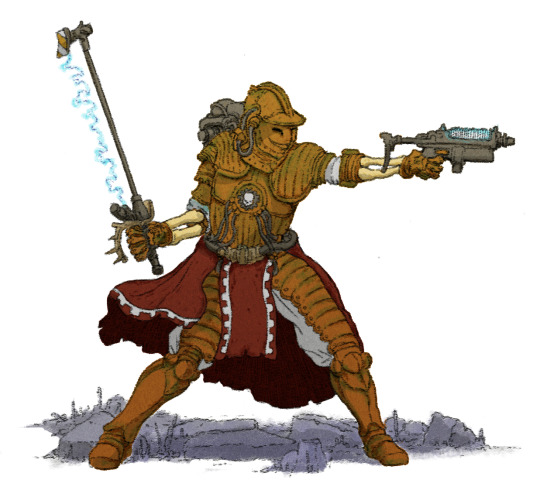
Skitarii Vanguard -
Based loosely on the infamous 'Smiling Savoyard' Italian helmet
#illustrators on tumblr#kotspaw#illustration#artists on tumblr#skitarii#adeptus mechanicus#warhammer 40k
81 notes
·
View notes
Text
On this day in Wikipedia: Wednesday, 10th January
Welcome, selamat datang, sveiki, მოგესალმებით (mogesalmebit) 🤗
What does @Wikipedia say about 10th January through the years 🏛️📜🗓️?

10th January 2023 🗓️ : Death - Constantine II of Greece
Constantine II of Greece, King of Greece (1964-1973) (b. 1940)
"Constantine II (Greek: Κωνσταντίνος Βʹ, romanized: Konstantínos II, pronounced [ˌkonstaˈdinos ðefˈteros]; 2 June 1940 – 10 January 2023) was the last king of Greece, reigning from 6 March 1964 until the abolition of the Greek monarchy on 1 June 1973. Constantine was born in Athens as the only son of..."

Image licensed under CC BY-SA 3.0? by
T.M._Constantine_&_Anne-Marie_of_Greece_Allan_Warren.jpg: Allan warren
derivative work: Daffy123 (talk)
10th January 2019 🗓️ : Event - Kidnapping of Jayme Closs
A 13-year-old American girl, Jayme Closs, is found alive in Gordon, Wisconsin, having been kidnapped 88 days earlier from her parents' home whilst they were murdered.
"On October 15, 2018, 21-year-old Jake Thomas Patterson abducted 13-year-old Jayme Lynn Closs from her family's home in Barron, Wisconsin. The attack took place at 12:53 a.m. after he forced his way inside and fatally shot her parents. Patterson took Closs to a house 70 miles (110 km) away in rural..."
10th January 2014 🗓️ : Death - Petr Hlaváček
Petr Hlaváček, Czech shoemaker and academic (b. 1950)
"Petr Hlaváček (February 23, 1950 – January 10, 2014) was a Czech shoe expert, university lecturer and researcher. His professional focus was to study the preparation and production of shoe materials, footwear, footwear ergonomics (especially for diabetics ) and historical footwear...."

Image licensed under CC BY-SA 3.0? by Josef Chlachula
10th January 1974 🗓️ : Birth - Bob Peeters
Bob Peeters, Belgian footballer and manager
"Bob Peeters (born 10 January 1974) is a Belgian football manager and former player currently manager of Eerste Divisie club Helmond Sport...."

Image licensed under CC BY-SA 4.0? by Hans Reefman
10th January 1924 🗓️ : Birth - Ludmilla Chiriaeff
Ludmilla Chiriaeff, Canadian ballerina, choreographer, and director (d. 1996)
"Ludmilla Chiriaeff (January 10, 1924 – September 22, 1996) was a Latvian-Canadian ballet dancer, choreographer, teacher, and company director...."
10th January 1824 🗓️ : Death - Victor Emmanuel I of Sardinia
Victor Emmanuel I, duke of Savoy and king of Sardinia (b. 1759)
"Victor Emmanuel I (Italian: Vittorio Emanuele; 24 July 1759 – 10 January 1824) was the Duke of Savoy, King of Sardinia and ruler of the Savoyard states from 4 June 1802 until his reign ended in 1821 upon abdication due to a liberal revolution. Shortly thereafter, his brother Charles Felix ascended..."

Image by Luigi Bernero
10th January 🗓️ : Holiday - Christian feast day: Peter Orseolo
"Pietro I Orseolo OSBCam, also named Peter Urseulus, (928–987) was the Doge of Venice from 976 until 978. He abdicated his office and left in the middle of the night to become a monk. He later entered the order of the Camaldolese Hermits of Mount Corona. He is venerated as a saint in the Catholic..."

Image licensed under CC BY-SA 4.0? by Didier Descouens
0 notes
Text






A lovely Savoyard type Burgonet, Italy, ca. 1620, from Fagan Arms.
#armor#armour#helmet#burgonet#savoyard#europe#european#italy#italian#early modern#faganarms#art#history
76 notes
·
View notes
Photo

Italian savoyard helmet, circa 1610
from The Art Institute of Chicago
1K notes
·
View notes
Photo
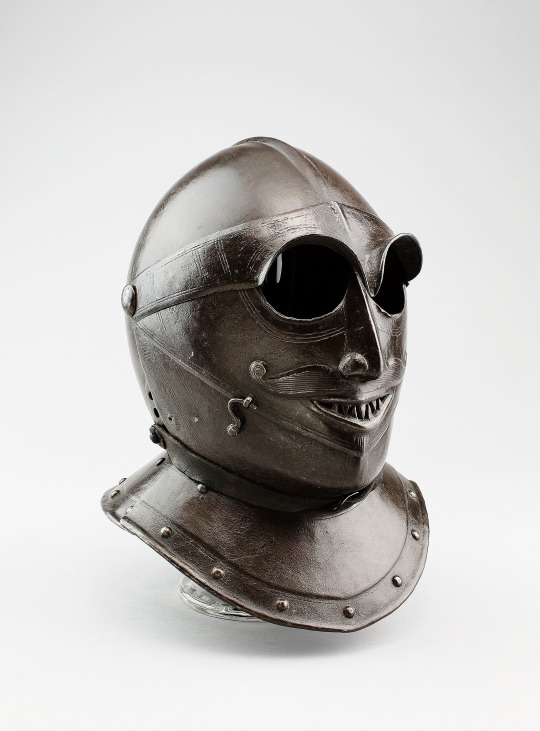



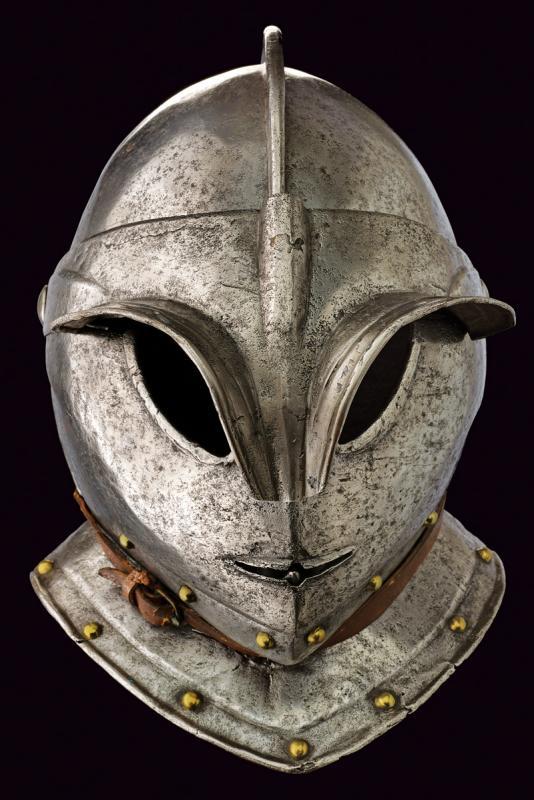

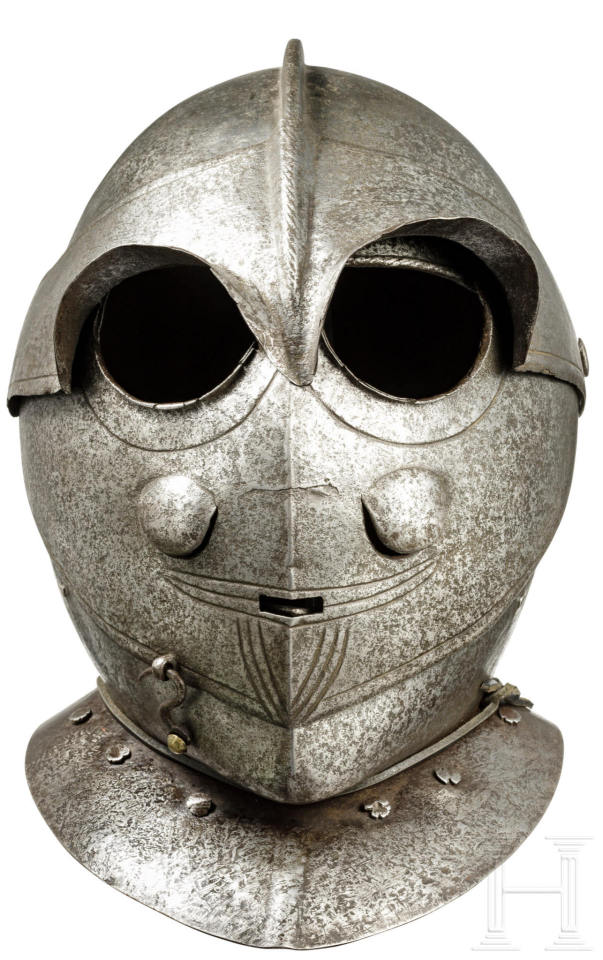



Italian Smiling Savoyard style Burgonets or Todenköpfe 😎
1. Closed Burgonet, 1600–1640
Medium: Steel and leather
Art Institute of Chicago
2. Closed Burgonet of so-called 'Savoyard' type, ca. 1620
Dimensions: Depth - 22 cm; Height - 36 cm; Width - 24 cm
Weight: 4200 g
Leeds, War Gallery
3. Close-helmet, ca. 1635
Medium: Low-carbon steel, embossed, engraved, and blackened
Height: 27.7 cm
Weight: 5.3 kg
The Wallace Collection, London
4. Closed Burgonet of “Savoyard” Type, ca. 1600–1620
Medium: Steel, leather
Dimensions: Height - 34.3 cm; Width - 27 cm; Depth - 31.8 cm
Weight: 4562 g
The Metropolitan Museum of Art
5. Closed burgonet of Savoyard type, ca. early 17th century
Height: 26 cm
Piedmont, Italy
6. A heavy North Italian Savoyard helmet, ca. 1600
Height: 30 cm
Weight: 4,489 g
7. A heavy North Italian helmet of Savoyard type, ca. 1600
Height: 29 cm
Weight: 3851 g
8. A heavy North Italian close-helmet of Savoyard type, ca. 1630
Height: 31.5 cm
9. Close Helmet for a Cuirassier, ca. 1615–20
Medium: Steel, gold, copper alloy, leather
Dimensions: Height - 26 cm; Width - 22.2 cm; Depth - 24.5 cm
Weight: 3860 g
The Metropolitan Museum of Art
10. Closed Burgonet of “Savoyard” Type, Possibly Made for Théodore Agrippa d'Aubigné (1552–1630), ca. 1600–1620
Medium: Steel, leather, gold
Dimensions: Height - 30.5 cm; Width - 25.4 cm); Depth - 29.8 cm
Weight: 4391 g
The Metropolitan Museum of Art
📝 Description:
These types of burgonets acquired the name 'Savoyard' due to large numbers being used by the troops of Charles Duke of Savoy when he assailed the city of Geneva on 11-12 December 1602. These helmets are also referred to as Todenkopf ("death's head," in German), an illusion to the eerie skull-like quality of the face defense. Savoyards contined to be produced until the 1630s/40s.
- -
Итальянский улыбающийся Бургиньот или "Мертвая голова" 😎
1. Закрытый Бургиньот типа савойяр (савойский), 1600–1640 гг.
Материалы: сталь, кожа
Чикагский институт искусств
2. Закрытый Бургиньот типа савойяр, ок. 1620 г.
Размеры: Глубина - 22 см; Высота - 36 см; Ширина - 24 см
Вес: 4200 г
Королевская оружейная палата в Лидсе
3. Закрытый Бургиньот, ок. 1635
Материалы: низкоуглеродистая сталь, тиснение, гравировка, чернение
Высота: 27,7 см
Вес: 5,3 кг
Коллекция Уоллеса, Лондон
4. Закрытый Бургиньот типа савойяр, ок. 1600–1620
Материалы: сталь, кожа
Размеры: Высота - 34,3 см; Ширина - 27 см; Глубина - 31,8 см
Вес: 4562 г
Музей Метрополитен
5. Савойский шлем, примерно начало XVII в.
Высота: 26 см
Пьемонт, Италия
6. Тяжелый северо-итальянский шлем типа савойяр, ок. 1600
Высота: 30 см.
Вес: 4,489 г
7. Тяжелый северо-итальянский савойский шлем, ок. 1600
Высота: 29 см
Вес: 3851 г
8. Тяжелый северо-итальянский савойский шлем закрытого типа, ок. 1630
Высота: 31,5 см
9. Закрытый шлем для кирасира, ок. 1615–20
Материалы: сталь, золото, медный сплав, кожа
Размеры: Высота - 26 см; Ширина - 22,2 см; Глубина - 24,5 см
Вес: 3860 г
Музей Метрополитен
10. Закрытый Бургиньот типа савойяр, возможно изготовлен для Теодора Агриппы д'Обинье (1552–1630), ок. 1600–1620
Материалы: сталь, кожа, золото.
Размеры: Высота - 30,5 см; Ширина - 25,4 см); Глубина - 29,8 см
Вес: 4391 г
Музей Метрополитен
📝 Описание:
Такие шлемы получили название "савояр" или "савойский шлем", так как их носили многие воины савойского герцога Карла Эммануила I во время их неудачного нападения на Женеву 11-12 декабря 1602 года. Савойяр, также известный как «мертвая голова», продолжали производиться до 1630-1640 гг.
#Savoyard #Burgonets #Todenköpfe #савояр #савойский_шлем
37 notes
·
View notes
Photo

Italians Send Their King Packing
The wages of political sin and ineptitude caught up last week with the House of Savoy, which for 85 years had ruled Italy. Under four Savoy kings, Italy became a kingdom and a third-class empire, then crashed into moral, military and economic collapse. Her armies tramped around the Mediterranean in a series of small0time but blatant aggressions. Ethiopia was invaded in 1896, Libya in 1911, Ethiopia again in 1935, When it was safe in 1940, France was “stabbed in the back.” Greece was knifed that fall. Yet despite bullying tactics, the armies of the House of Savoy invariably bit the dust: Adowa (1896), Caporetto (1917), Guadalajara (1937), Greece (1940), Africa and Sicily (1940-43).
The Savoyard chiefly responsible for his nation's downfall was Victor Emmanuel III who ruled for 46 years. Too small (5 feet 3 inches) to look like a real monarch, too weak to behave like one, he let Mussolini take over the government in 1923, make Italy the first fascist dictatorship and disrespectfully push the House of Savoy around.
Last week the curtain came down, perhaps forever, on these royal blunders. When Victor Emmanuel went into unwilling exile to Egypt last month, hi stall (6 feet) son, Umberto II, 43, took over. But this was not enough to save the monarchy. In a referendum on June 2, the people voted to end the monarchy. This was Umberto's cue to leave but the House of Savoy had one more chance to make itself ridiculous. When the premier, Alcide de Gasperi, went to the Quirinal Palace to get his abdication, Umberto said he was not going after all. The election, he said, was a fraud. For a few days there was opéra bouffe confusion. Then, suddenly, Umberto packed up, drove to Rome's Ciampino airport, waved goodbye to a few weeping sympathizers and flew off to Portugal.
Life, Jun 24, 1946
3 notes
·
View notes
Note
Just a random noisy question you are free to ignore if it's to noisy: your trilingual, afaik? Have you ever had the situation where you could only speak one of those languages or suddenly didn't understand one of your native languages for a second because you were tuned to another one?
I find it a really funny concept and could only obsverve it once with a friend who endet up only being able to speak Spanish for some time and being really frustrated by it. As well as me not understandig my native language once after speaking in English for several hours (yes, there was alcohol involved 😂)
I am trilangual indeed : English, French and Spanish! I also speak a tad of Italien, and some French and Spanish patois (Savoyard and Mallorquìn) and have some notion of Polish, Irish and Welsh. (Hi, I like linguistics.)
I can juggle with two languages with no issues normally (Listening and singing along to French music whilst reading in English, or speaking in Spanish whilst writing down the order in English for exemple)
However, when I'm visiting my grandparents (who are Italian/French), most of the time I address them in English before my first coffee of the day...! And usually don't realise it until my grand-mother replies in approximate English "I do not speak English my dear" 😂
But, if it's more than 2 languages, that's when things get complicated : used to work in Spain where the owners were German/American, my team was Italian and Polish and the patrons were mostly French. A busy evening felt like a fever dream, where all languages were mixing up in my head, and I would use the wrong language for the wrong person and I'd end up so mentally tired that by the end of the evening, I would speak in monosyllable words...
#i guess it's like everything... it's just a question of practise and a force of habit? 😂😂 but yeah; definitly can have some brain farts#if i am under caffeinated or exhausted!!!!!#but otherwise... it's pretty alright!#and thanks for the question; that was not nosy at all; dont worry 😂😂
8 notes
·
View notes
Text
Friday 1 August 1834
6 35
1
No kiss last night not with her at all. Fine morning F70° at 7 ½ am – breakfast at 7 40 – took George and A- and I off at 9 10 in little char to Pont St Laurent – at the bottom of the street cross the river (Guiers vif - the Guier mort on our left 2/3 way from P. St. Laurent to the Great Chartreuse) and very soon after stop at the French Douane – the town of Echelles partly on one side partly on the other – the south side French the north Savoyard - They searched our char and then told us to go to the woman to have our persons examined – this was too much – went into the bureau - shewed my passport and remonstrated and got off – well we had it – the master of our auberge had gone out and forgotten to give it, and I had waited 10 minutes for it – on our right (west) the round topped verdant hills – very pretty – left (east) the magnificent wall of white hoary calcareous rock dividing Savoy from France - cross the Guier mort and almost immediately enter the little town of Pt. St. Laurent and stop at 9 55 at (in front of, L’Auberge du midi) chez Tartavel – a sort of cabriolet-calèche diligence at the door – 35 minutes before we could get our 3 mules ready and be off – would not have more than one guide - A- on a Spanish saddle, and my English one not very comfortable – off at last at 10 ½ - soon enter the magnificent defile - pass under the 1st arch-way and then pass an iron foundry - At 11 40 the valley closed by a magnificent natural high pyramidal rock and an arch-way under a ruined building abutting against the rock on each side very soon after at the bottom of the hill cross the river over high 1 arch unbattlemented bridge – a peep at the chartreuse when we were ½ hour off
SH:7/ML/E/17/0067
seated on a green spot or plateau high under the mountain – a very large pile of building – reached it at 1- no ladies allowed to enter the monastery (Cistertian [Cistercian] -habit of white cloth - confined by white cord or leather belt -a serge shirt - no linen allowed) - the great entrance gate looks south – passed and went into a building at a little distance an old infirm monk and 2 women there in the large comfortless looking room on the left – the right formé à clef – so my request for a bed for A- to lie down upon in vain – she ate her fowl, then lay down upon the bench along the table with chairs to prevent her falling off, and the coats and cloaks for a pillow – by this time about 1 ¾ it began to rain (it had rained a little during the last ½ hour as we came) and soon afterwards we had heavy rain with thunder and lightning which did not abate till just before we set off on our return - I had amused myself spelling over a plan of the convent, the terrific prints of a soul in purgatory – surrounded with flames and ditto in hell surrounded with flames with the addition of large green serpents gnawing the bodies – this amusement over I was cross to see poor A- so comfortably – however she was better and quite reconciled to hear that I should return rain or not – our garçon guide had kept out of the way and pothered me – at last he came and would have 43 sols for his dinner – I was astonished but gave him the money –an Italian family in the room with us and inquired of the waiter and got a note proving that the fellow had only paid 15 sols and made him refund the rest to his shame and surprise – for the ostler charging only 16 sols for the 3 mules, I could not think the dinner could cost so much - Off at 3 40 from La Grande Chartreuse – A-‘s mule so stumbling soon put her on to mine – in 5 or 6 minutes found our guide lame – George led A-‘s mule and the guide mounted his – in 5 or 6 minutes more I tired out of the stumbling and mounted George’s mule and let the guide have the stumbler and made George mount behind A- and thus we got on, trotted when we could, he holding A- on and holding her bridle too and in 50 minutes we reached the pyramidal rock – and in 3 minutes under 2 hours we were at Pont St Laurent (without a drop of rain) and paid for the mules – would not give the guide one sol, nor would I listen to the master or the boy who owned the saddles and wanted me to pay for them extra but was off in the char that was in waiting at 5 40 and alighted at our Inn at Echelles at 6 20 - from Pont St. Laurent to the Chartreuse the road is good in comparison - not dangerous - everywhere wide enough - nowhere less than 8 or 9 ft. even in those little bits (just after passing the foundry and afterwards) cut out of the rock - the only disagreeable was the mules loaded with fir planks and spars which being 4 or 5 yards long were rather tremendous to pass - besides these we had mules laden with charcoal which not to frightful, were not to be desired - Except the Gorge d’Ortessa from Mt. Perdu down to Torla, the gorge or defile to the Chartreuse is the finest I ever saw - it is really magnificently fine - thickly wooded even to the tops of the high wall-like rocks - surely they must be in [?] places 12 or 1400 ft. above the river - the wood is perhaps chiefly beech with fir nearer the Chartreuse intermixed and towards the tops of the rocks - limestone strata highly inclined - we should have seen the chapel of St. Bruno but it is 1/3 league from the monastery - would take us an hour to go and return and I was too much afraid of the rain - they wanted us to stay all night - but the Italian family who dined while we were there had only could only get soup, omelette and potatoes - and strawberries and this did not agree well - our guide wanted us to go to la paroisse, an hour off, but this I declined - glad to be back aux Echelles – dinner at 6 33 good rice milk and strawberries (besides soup, fowl, and roast mutton) and comfortable - till 10 ¼ wrote the journal of today – A- wrote 2 1/3 pages to my aunt and was in bed by 10 - no rain as we returned and fine evening and very fine in the morning till about 1 ½ pm - F68° now at 10 ¼ pm - till 12 ½ wrote very small and close the latter 2/3 page 3 and ends of A-‘s letter to my aunt and wrote 2 ½ pages to Lady Gordon.
3 notes
·
View notes
Photo

Bonhams : A North Italian Close-Helmet Of So-Called 'Savoyard' Type
A NORTH ITALIAN CLOSE-HELMET OF SO-CALLED 'SAVOYARD' TYPE
CIRCA 1630
With two-piece skull rising to a low comb with turned edge (minor holes and damage), mask-like visor pierced with a small 'mouth' and with circular arrangements of holes for ventilation, a pair of crescent-shaped vision slits above, all arranged either side of a low medial ridge and with line engraved borders, bevor shaped to the chin (old patched repair) and pivoted at the same points as the visor (old repair), and single gorget-plates at front and rear (old riveted repair), the former drawn-down to a blunt point, later leather chin-strap, and turned recessed borders with dome-headed brass lining rivets (pitted overall)
31.5 cm. high
1 note
·
View note
Text
1834 August Friday 1st
6:35
1
No kiss last night not with her at all - fine morning F70 at 7:30 am breakfast at 7:40 –
took George and Ann and I off at 9:10 in little charabanc to Pont Saint Laurent - at the bottom of street cross the river (Guiers vif- the Guier mort on our left 2/3 way from Pont-Saint Laurent to the great Chartreuse) and very soon after stop at the French Douane - the town of Echelle partly on one side and partly on the other - the south side French the north savoyard - they searched our charabanc and then told us to go to the women to have our persons examined - this was too much - went into the bureau - showed my passport and remonstrated and got off - well we had it - the master of our auberge had gone out and forgotten to give it and I had waited 10 minutes for it –
on right (west) the round topped verdant hill very pretty - left (east) that magnificent wall of white hoary calcerous- cross the Gruier Mort and almost immediately enter the little town of Pont Saint Laurent and stop at 9:55 in front of the L’auberge du Midi, chez Tartavel - a sort of cabriolet caleche diligence at the door - 35 minutes before we could get one not very comfortable - off at last at 10:30 - soon enter the magnificent défilé pass into the first archway and then pass an iron foundry - at 11:40 the valley closed by a magnificent natural high pyramidal rock and an archway under a mined building abutting against the rock on each side very soon after at the bottom of the hill crossed the river over high one arch unbattlemented bridge –
a peep at the Chartreuse when we were half hour off - seated on a green spot or plateau high under the mountain - very large pile of building - reached it at 1- no ladies allowed to enter the monastery Cistercian - habit of white cloth – confin[e]d buy white cord or leather belt a serge shirt - no linen allowed - the great entrance gate looks south - passed and went into a building at a little distance an old infirm monk and two women there in the large comfortless looking room on the left - the right formi à clef - so my request for a bed from Ann to lie down upon in vain - she ate her fowl, and then lay down upon the bench along table with chairs to prevent her falling off, and the coats and cloaks for a pillow - by this time about 1 3/4 it began to rain it had rained a little during the last half hour as we came and soon afterwards we had heavy rain with thunder and lightning which did not abate till just before we set off on our return –
I had amused myself spelling over a plan of the convent the terrific prints of a soul in purgatory surrounded with flames, and ditto in hell surrounded with flames with the addition of large green serpent gnawing the body - this amusement over I was cross to see poor Anne so comfortless - however she was better, and quite reconciled to hear that I should return rain or not –
Our garcon guide had kept out of the way and pothered me - at last he came and would have 43 sols for his dinner - I was astonished about but gave him the money - inquired of an Italian family in the room with us and of the waiter and got a note proving that the fellow had only paid 15 sols, and made him refund the rest to his shame and surprise - for the ostler charging only 16 sols for three mules, I could not think the dinner could cost so much –
off at 3:40 from the grande Chartreuse A's mule so stumbling soon put her onto mine - in 5 or 6 minutes found our guide lame- George led Anne's mule, and the guide mounted his – in 5 or 6 minutes more I tired out of the tumbling and mounted George’s mule, and let the guide have the stumbler, and made George mount behind Ann and thus we got on trotted when we could, he holding on on and holding her bridle too, and in 50 minutes we reached the pyramidal rock - and in 3 minutes under 2 hours we were at Port Saint Laurent (without a drop of rain ) and paid for the mules - would not give the guide one sol, nor would I listen to the master or the boy who owned the saddles and wanted me to pay for them extra, but was off in the charabanc that was in waiting at 5:40 and alighted at our inn at Echelles at 6:20 –
from Pont Saint Laurent to Chartreuse the road is good in comparison not dangerous - everywhere wide enough - nowhere less than eight or feet eight or nine feet even in those little bits just after passing the foundry and afterwards cut out of the rock - the only disagreeable was the mules loaded with four planks and spars which being four or five yards long but rather tremendous to pass - besides these we had mules laden with charcoal which though not so frightful, were not to be desired - except the Gorge d’Ortessa from Mount Perdu down to Torla, the gorge or défilé to the Chartreuse is the finest I ever saw - it is really magnificently fine - thickly wooded even to the tops of the high wall-like rocks - surely they must be in many places 12 or 1400 feet above the river - this wood is perhaps chiefly beech with fir nearer the Chartreuse intermixed and towards the top of the rocks - limestone strata highly inclined –
we should have seen the Chapel of Saint Bruno but it is quarter league from the monastery - would take us an hour to go and return and I was too much afraid of the rain - they wanted us to stay all night - but the Italian family who dined while we were there could only get soup, omelette and potatoes - and strawberries and this did not augur well - our guide wanted us to go to La parvisse an hour off, but this I declined - glad to be back aux Echell –
dinner at 6:33 good rice milk and strawberries (besides soup, fowl, and roast mutton) and comfortable - till 10 1/4 writing the journal today - Ann wrote 2 1/3 pages to my aunt and was in bed by 10 - no rain as we returned and fine evening and very fine in the morning till about 1 1/2 pm F 68° now at 10:15 pm till 12 1/2 wrote very small and close the latter 2/3 page 3 and the ends of Ann’s letter to my aunt and wrote 2 1/2 pages to Lady Gordon -
8 notes
·
View notes
Photo

if Croatia became a non-fascist monarchy under Tomislav II after WW2
from /r/vexillology
Top comment: **!wave** "Tomislav II" was the brief regnal name of **Aimone, Duke of Aosta**, a prince of the Italian royal House of Savoy, when he was proclaimed King over the German/Italian-influenced Independent State and was nominal head of state over Croatia until his father, Victor Emmanuel II, had him resign after Mussolini's dismissal in 1943. What I meant by the title precisely is essentially **alternate history;** Croatia gets rid of its fascists, but keeps its Savoyard king and becomes a Western democratic constitutional monarchy. The shield is the House of Savoy's coat of arms quartered with the classic Croatian checkerboard. The crown is a heraldic depiction of the **Crown of Zvonimir**, the crown of an 11th-century king whose foreign policy was rather peaceful and instead focused on internal development, and was the last *native* king of Croatia with any real power. The colours of the tricolour are in-betweens of Croatia and Italy's respective shades of blue, green and red.
22 notes
·
View notes
Text



A blackened Savoyard style Burgonet,
Height: 13.5 in/34.3 cm
Width: 10.6 in/27 cm
Depth: 12.5 in/31.8 cm
Weight: 10.1 lbs/4562 g
Italy, ca. 1600-1620, housed at the Metropolitan Museum of Art.
#armor#armour#helmet#burgonet#savoyard#blackened#europe#european#italy#italian#early modern#themet#metmuseum#art#history
84 notes
·
View notes
Text

Italian savoyard helmet, 17th century
from Bolk Antiques
94 notes
·
View notes
Photo



⚜️ Savoyard Helmet, Northern Italy, ca. 1630
🏛 Florence, Museo Stibbert (Art Museum)
Museo Stibbert
📜 DESCRIPTION:
Savoyard helmet was common among the end of the 16th - 17th centuries cuirassiers of the heavy cavalry.
"Savoyard" helmets (also known as "Savoyard" burgonet) are a distinctive form of late Italian close-helmet worn by cuirassiers – the heavy cavalry.
The term Savoyard is a reference to the large number of these helmets that the Swiss captured from the troops of the duke of Savoy Charles Emanuel I (1580-1630) during an unsuccessful assault on the city of Geneva during the night of December 11–12, 1602.
⠀
The design of the helmet suggests a human face or skull. They were known as "Todenkopf" or “death’s head” helmets in Germany.
⠀
Savoyard helmets show various expressions:
▪ almond or round eyes;
▪ mouths open, closed or even smiling;
▪ perforated moustaches or prominent noses.
- -
⚜️ Кавалерийский шлем "савойяр" или "савояр", ок. 1630 г.
🏛 Флоренция, Музей Стибберта (Museo Stibbert, Art Museum)
📜 ОПИСАНИЕ:
Савойский шлем был распространен среди тяжелой кавалерии конца XVI-XVII вв.
Термин "савойяр" или "савояр" произошел от французского "savoyard" — савойский. Такие шлемы носили элитные кавалерийские отряды, сформированные Карлом Эммануилом I, герцогом Савойским (1580-1630), во время их неудачного нападения на Женеву в 1602 году.
⠀
Схожесть с черепом послужила основанием для названия этого шлема — «мёртвая голова» (от нем. Todenkopf). Козырёк савойяра часто выгибался двумя дугами над смотровыми прорезями.
⠀
На савойских шлемах встречаются различные выражения:
▪ миндальные или круглые глаза;
▪ открытые, закрытые или даже улыбающиеся рты;
▪ перфорированные усы или выдающиеся носы.
⠀
#medievalarmour
#armsandarmor
#medievalarmor
#armor
#armure
#harnisch
#harness
#armatura
#helmet
#helm
#medievalhelmet
34 notes
·
View notes
